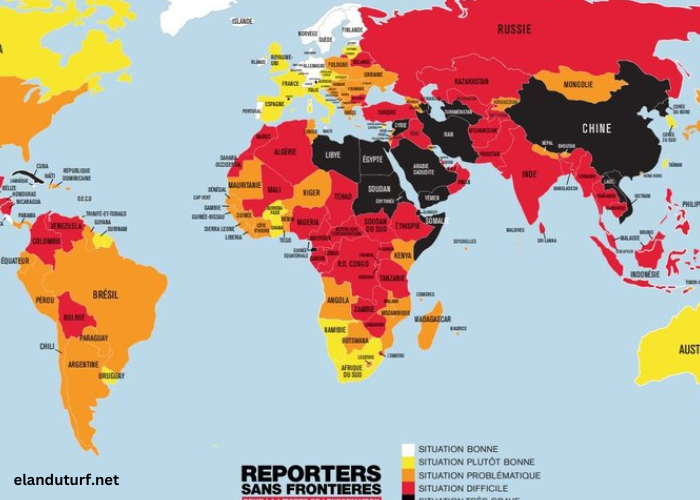The concept of health and fitness has evolved significantly over the years, prompting the development of various metrics to assess and guide individual well-being. Among these metrics, the Indice DE Forme stands out as a valuable tool for evaluating overall health and fitness levels. Understanding what Indice DE Forme means and how it can be applied in real life is crucial for anyone interested in improving their health. This blog post will delve into the intricacies of Indice DE Forme, exploring its components, calculation methods, and implications for a healthy lifestyle.
What is Indice DE Forme?
Indice DE Forme is a French term that translates to “Form Index.” This index is a composite score used to assess an individual’s physical condition and health status. The calculation typically involves several parameters, including body composition, cardiovascular fitness, muscular strength, and flexibility. The goal of the Indice DE Forme is to provide a comprehensive overview of an individual’s fitness level, allowing for better health management and improvement strategies.
The Indice DE Forme can serve as a baseline for individuals embarking on a fitness journey or those looking to maintain their current health levels. It is widely used by fitness professionals, healthcare providers, and individuals alike to gauge progress and set achievable health goals.
How is Indice DE Forme Calculated?
Calculating the Indice DE Forme involves evaluating multiple components of fitness. The specific parameters can vary, but a common approach includes assessing body mass index (BMI), aerobic capacity (often measured through VO2 max), muscle strength, and flexibility. Here’s a detailed breakdown of each component:
- Body Mass Index (BMI): This is a widely used measure that helps determine whether an individual has a healthy body weight for their height. The formula for calculating BMI is weight in kilograms divided by height in meters squared (kg/m²).
- Cardiovascular Fitness: This is usually assessed through various tests, such as a treadmill or cycling ergometer test, where the maximum oxygen uptake (VO2 max) is measured. This value indicates how well your body utilizes oxygen during intense exercise.
- Muscle Strength: Strength can be evaluated through exercises that test major muscle groups, such as squats, bench presses, or deadlifts. The maximum weight lifted for a single repetition (1RM) can be a good indicator.
- Flexibility: This component is often assessed using tests such as the sit-and-reach test, which measures the flexibility of the lower back and hamstrings.
Once all these components are measured, they are combined to produce an overall Indice DE Forme score, which provides insight into an individual’s fitness status.
Why is Indice DE Forme Important for Health?
The Indice DE Forme serves several important purposes in health management:
- Personalized Health Insights: By understanding one’s fitness level through the Indice DE Forme, individuals can make informed decisions about their health and wellness journey. It provides a clearer picture of strengths and weaknesses.
- Goal Setting: The Indice DE Forme can help in establishing realistic fitness goals. By identifying areas that need improvement, individuals can tailor their workouts and nutrition plans accordingly.
- Progress Tracking: Regularly assessing the Indice DE Forme allows individuals to track their progress over time. This ongoing evaluation can motivate and encourage consistency in health and fitness efforts.
- Preventive Health Measures: By maintaining a healthy Indice DE Forme, individuals can potentially reduce the risk of chronic diseases, such as obesity, diabetes, and heart disease. It serves as a preventive tool for overall health management.
How Can You Improve Your Indice DE Forme?
Improving your Indice DE Forme requires a multifaceted approach that combines exercise, nutrition, and lifestyle changes. Here are some effective strategies:
- Regular Exercise: Incorporate a balanced fitness routine that includes cardiovascular, strength, and flexibility training. Aim for at least 150 minutes of moderate-intensity aerobic activity each week, along with strength training on two or more days.
- Nutrition: Focus on a balanced diet rich in whole foods, including fruits, vegetables, lean proteins, and whole grains. Proper nutrition fuels workouts and supports recovery.
- Hydration: Staying well-hydrated is essential for optimal performance and recovery. Water is crucial for maintaining energy levels and preventing fatigue.
- Sleep: Adequate sleep is vital for recovery and overall health. Aim for 7-9 hours of quality sleep per night to support your fitness goals.
- Mindfulness and Stress Management: Incorporating practices such as yoga, meditation, or deep-breathing exercises can help manage stress, which in turn supports physical health and wellness.
By implementing these strategies, individuals can work towards improving their Indice DE Forme and overall health.
What Role Does Age Play in Indice DE Forme?
Age is a significant factor when it comes to fitness levels and the Indice DE Forme. As individuals age, their bodies undergo various physiological changes that can impact their fitness. Here are some ways in which age affects the Indice DE Forme:
- Muscle Mass: Aging is often associated with a decrease in muscle mass, known as sarcopenia. This decline can affect strength and overall fitness levels, which are critical components of the Indice DE Forme.
- Cardiovascular Health: Older adults may experience changes in cardiovascular health, such as increased blood pressure or reduced maximum heart rate. These factors can influence cardiovascular fitness scores.
- Flexibility: Aging typically leads to a reduction in flexibility, which can impact performance in physical activities. Maintaining flexibility through stretching and mobility exercises is crucial for older adults.
- Recovery Time: Older adults may require longer recovery times after workouts. Adjusting exercise intensity and allowing for adequate rest is essential for optimizing fitness levels.
Understanding how age affects the Indice DE Forme can help individuals tailor their fitness programs accordingly and set realistic goals.
How Does Indice DE Forme Compare to Other Health Metrics?
The Indice DE Forme is one of several metrics used to assess health and fitness, and it is beneficial to understand how it compares to others:
- Body Mass Index (BMI): While BMI provides a quick assessment of body weight relative to height, it does not account for muscle mass, fat distribution, or fitness levels. The Indice DE Forme offers a more comprehensive evaluation.
- Waist-to-Hip Ratio (WHR): This metric assesses fat distribution and can indicate risk for cardiovascular diseases. The Indice DE Forme, however, encompasses multiple fitness components, making it a broader measure.
- Fitness Age: Fitness age compares an individual’s fitness level to that of a typical person of the same age. This concept can complement the Indice DE Forme by providing additional insights into fitness status.
By understanding the distinctions between these metrics, individuals can leverage them collectively for a more comprehensive health assessment.
What Are Common Misconceptions About Indice DE Forme?
Several misconceptions surround the Indice DE Forme, which can lead to misunderstandings about its importance and application:
- It’s Only for Athletes: Many people believe the Indice DE Forme is only relevant for elite athletes. In reality, it is applicable to individuals of all fitness levels, providing valuable insights regardless of athletic ability.
- It Only Measures Weight: Some think the Indice DE Forme focuses solely on body weight. However, it considers various factors, including strength, cardiovascular fitness, and flexibility.
- Once Calculated, It Doesn’t Change: Another misconception is that the Indice DE Forme is static. In truth, it can change over time with lifestyle adjustments, making regular assessments beneficial.
By dispelling these misconceptions, individuals can better appreciate the value of the Indice DE Forme in their health and fitness journey.
Conclusion
In conclusion, the Indice DE Forme is a valuable tool for assessing overall health and fitness. By understanding its components, calculation methods, and implications, individuals can leverage this index to enhance their well-being. Whether you’re starting a fitness journey or looking to maintain your current level, the Indice DE Forme provides critical insights and guidance.
Incorporating strategies to improve your Indice DE Forme can lead to a healthier lifestyle, enhanced physical capabilities, and a greater appreciation for your body’s potential. As health metrics continue to evolve, embracing tools like the Indice DE Forme can empower individuals to take control of their health and fitness goals, ultimately leading to a happier and more fulfilling life.




